What's New
Displaying results 1341 - 1350 of 4052

Resource | Infographics,
UNAIDS calls for the elimination of TB deaths among people living with HIV and for health systems to be strengthened and services integrated to allow for a more rapid scale-up of HIV and TB programming. Countries must expand HIV prevention and treatment programmes that include regular TB screening, preventive therapy and early treatment, since they are simple, affordable and effective programmes that prevent TB deaths.
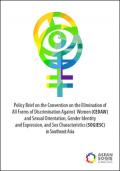
Resource | Publications,
It is critical in understanding the information in this policy brief, that we recognize the historical and contemporary experiences of marginalization against all women, and that our analyses of these experiences as they relate to the Convention on the Elimination of All Forms of
Discrimination Against Women (CEDAW) should not be limited to the relationships or dynamics between cisgender and heterosexual men and women. Recognizing the powerful intersectional dynamics at work here and how the lack pluralistic views on gender and sexual diversity blind advocates and policy makers to the natural pluralistic nature of gender and sexuality. This consequently contributes to the restrictions on women's human rights.
This policy brief is based on a desk review of pertinent documents, including state submissions and shadow reports from ASEAN member-states and Timor-Leste. It includes the most recent periodic reports submitted by these countries, as well as the Concluding Observations from the CEDAW Committee, which were published between 2012 and 2017.
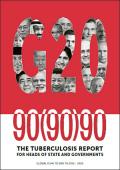
Resource | Publications,
The Global Plan to End TB 2016–2020 calls for a paradigm shift in the approach to TB, demanding a scale-up of TB prevention and care services to unprecedented coverage levels. Without this paradigm shift, we cannot see the end of TB. Measuring progress towards the 90-(90)-90 targets will unveil the gaps at each stage of the TB care cascade, exposing the unacceptably high numbers of people who are being left behind and encouraging the mobilization of essential resources for countries to ensure the delivery of quality TB services.
This report is the first in a series produced by the Stop TB Partnership. The goal is to assess the status of country TB programmes in terms of the Global Plan’s 90-(90)-90 targets and to provide a baseline for monitoring progress over the next 5 years. Currently, the 30 high TB and drug-resistant TB (DR-TB) burden countries that account for almost 80% of the global burden exhibit the biggest gaps in the areas of diagnosis for TB and DR-TB, and the provision of preventive therapy (PT). Moreover, monitoring the uptake of TB services in key populations remains a challenge due to the limited availability and disaggregation of data.
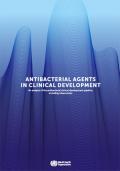
Resource | Publications,
The report – “Antibacterial agents in clinical development – an analysis of the antibacterial clinical development pipeline, including Mycobacterium tuberculosis” – shows a serious lack of new antibiotics under development to combat the growing threat of antimicrobial resistance. Most of the drugs currently in the clinical pipeline are modifications of existing classes of antibiotics and are only short-term solutions.
The report found very few potential treatment options for those antibiotic-resistant infections identified by WHO as posing the greatest threat to health, including drug-resistant tuberculosis which kills around 250 000 people each year. In addition to multidrug-resistant tuberculosis, WHO has identified 12 classes of priority pathogens – some of them causing common infections such as pneumonia or urinary tract infections – that are increasingly resistant to existing antibiotics and urgently in need of new treatments.
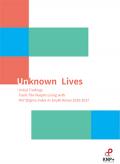
Resource | Publications,
From March 2016 to June 2016, 15 field researchers met 104 people living with HIV in South Korea and asked about their experiences of stigma and discrimination in the last 12 months. The survey was conducted through a translated version of the standardized questionnaire developed by the UNAIDS and associated institutions.
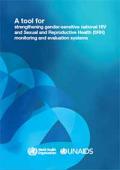
Resource | Tools,
This document is a tool to assist countries in strengthening systems for national monitoring and evaluation (M&E) of HIV and sexual and reproductive health (SRH).
This tool is intended to be used, first and foremost, by monitoring and evaluation and/or health information management officers involved with national HIV or SRH M&E systems, as well as in SRH or HIV programmes at the sub-national level (for example, at the district level, individual projects, community-based programmes, nongovernmental organization (NGO) programmes and interventions). However, it may also be relevant to other stakeholders who are familiar with the basics of M&E and who use HIV or SRH data for advocacy and for decision-making for policy and programmes (for example, researchers, academics, advocates and policy-makers).
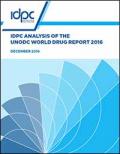
Resource | Publications,
The World Drug Report for 2016, the flagship publication of the United Nations Office on Drugs and Crime (UNODC), is framed by the recent United Nations General Assembly Special Session (UNGASS) on drugs, and draws on key themes developing from the Special Session. It shows the influence of the Outcome Document, and of the Sustainable Development Agenda (SDA).
The Report devotes considerable energy to examining the extent of drug use and its consequences for health. While emphasising the play of uncertainty within its field of knowledge, it nevertheless makes some rather grand claims, such as that one in 20 adults – or a quarter of a billion individuals – used at least one drug in 2014, the last year for which data are available. The narrative of stability is invoked alongside this claim by reminding the reader that this group has remained the same as a proportion of the global proportion, which has expanded in parallel.
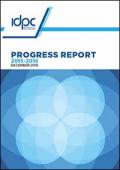
Resource | Publications,
The period covered by this progress report has been highly eventful, not least because of the recent UN General Assembly Special Session on Drugs (UNGASS) which was held in April 2016.
The UNGASS has been a central focus of IDPC’s work during these 13 months. It has been a fast-paced year with tandem efforts to ensure civil society visibility and engagement in the UNGASS process, alongside seeking to positively influence the outcome towards ensuring the prominence of health and human rights.
In addition to the UNGASS, this report highlights IDPC's networking efforts in South East Asia and Latin America and show cases the growth in the Support. Don’t Punish campaign which continues to engage and mobilise new activists in countries as diverse as Burkina Faso, South Africa, Costa Rica, Chile, Lebanon, Serbia, Slovenia, Russia, India, Sri Lanka, Nepal, New Zealand, Myanmar and the Philippines.
Resource | Presentations,
This is a presentation about the United Nations Political Declaration on Ending AIDS and sets world on the Fast-Track to end the epidemic by 2030.
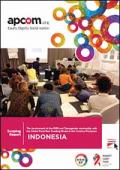
Resource | Publications,
The Global Fund instituted the Country Dialogue, which is an on-going process that occurs at the country level among the government, the private and public sectors, the networks of key populations including people living with HIV, civil society and other technical partners as a means to ensure that meaningful participation happens. It was envisioned to result to a shared vision amongst partners on how to improve health and fight the epidemic that is expected to redound to a robust country Concept Note.
As other countries who are recipients of the Global Fund grants, Indonesia implemented the New Funding Model beginning form the country consultation processes in developing national health strategies and strengthening health and community systems. The country has added, as part of their country dialogue, the conduct of National Gender and HIV Assessment, as well as, HIV and the law/human rights legal review. The country has also identified the stakeholder groups who should be engaged in the process, and the specific activities that need their feedback.





